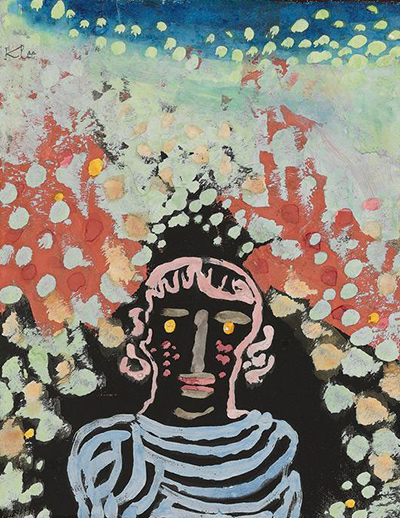Paul Klee remains one of the most enduringly popular painters of his era. He is also a relative rarity among 20th painters – his critical reputation is assured, and a range of his work is widely appreciated.
Rarer still, the critics and the public seem to agree on what they like. His painting “Likeness in a Bower” (“Bildnis in der Laube”) seems to draw together many of the qualities that they, and we, enjoy.
Klee himself saw colour as the key to his art, and as something inseparable from his own identity as a painter. While works such as “Pictorial Architecture (Red, Yellow, Blue)” find him developing the relationships between colours in an abstract composition, this figurative work reveals the same fascination.
Using a black ground allows Klee to light up the canvas with tones that capture the effect of colours seen in sunlight. As in “Abstraction with Reference to a Flowering Tree”, Klee gives us a wonderful evocation of sunshine filtered through leaves and flowers. A broad palette sets starry-night yellows against deep blue, and contrasts ochre-reds with pale undersides of leaves – the ‘Laube’ of the German title.
For all the importance of colour, there are other key qualities that play an important part. Klee’s work is often characterised by a sense of spontaneity – he liked the metaphor of ‘taking a line for a walk’. Although that self-image overlooks his compositional rigour, his spontaneity is much in evidence here.
The painting seems to have an inherent graphic energy to it: consider the sweeping fabric lines of the dress, the closely evoked curls of hair and, most of all, the vivid splashes of colour.
This painting has another claim to fame… as one of the great art mysteries of recent times. The original went missing in the 1990s – stolen from an art gallery in Manhattan – and remained lost for over 20 years until it was recovered by the Immigration and Customs Enforcement unit and a Canadian art dealer.




